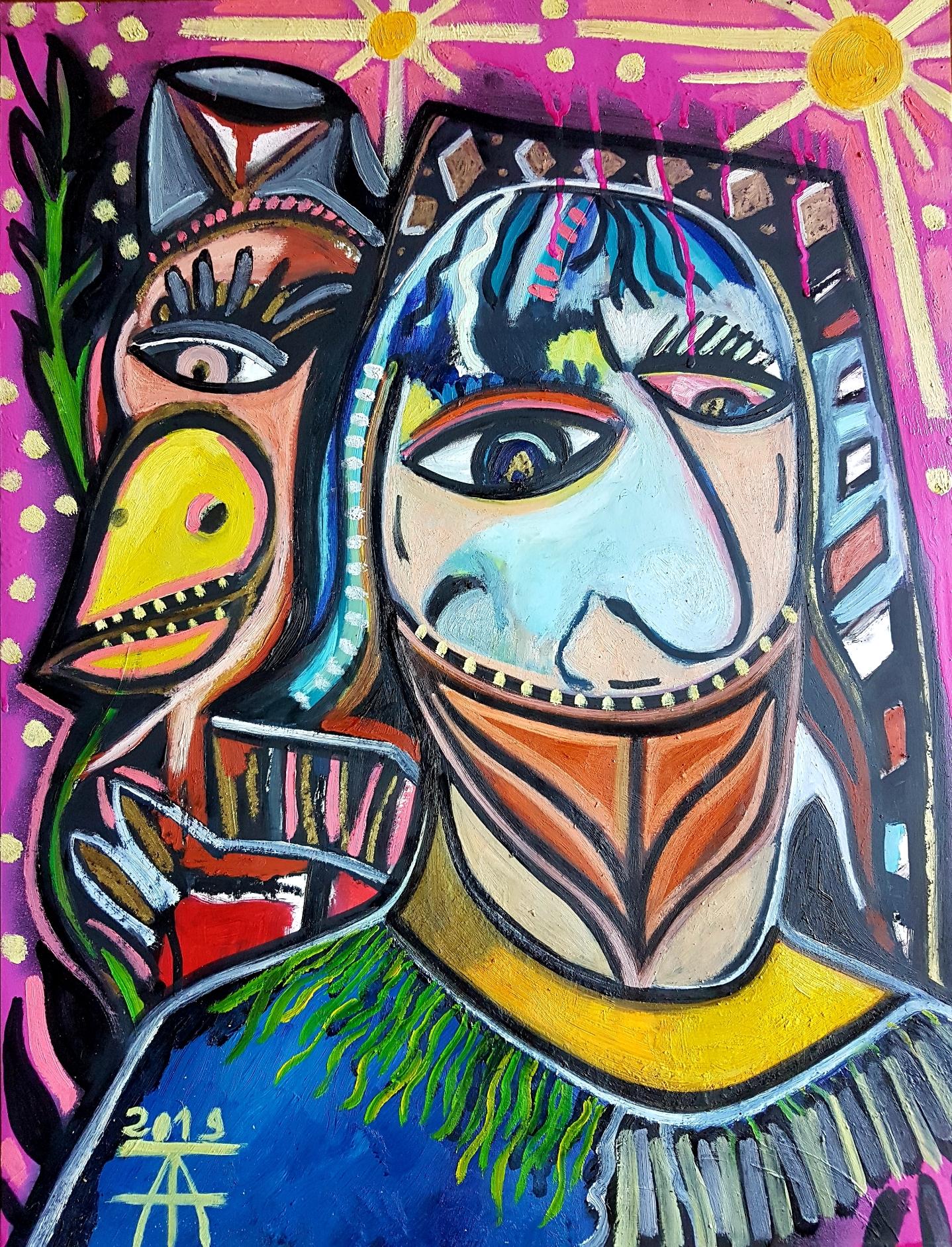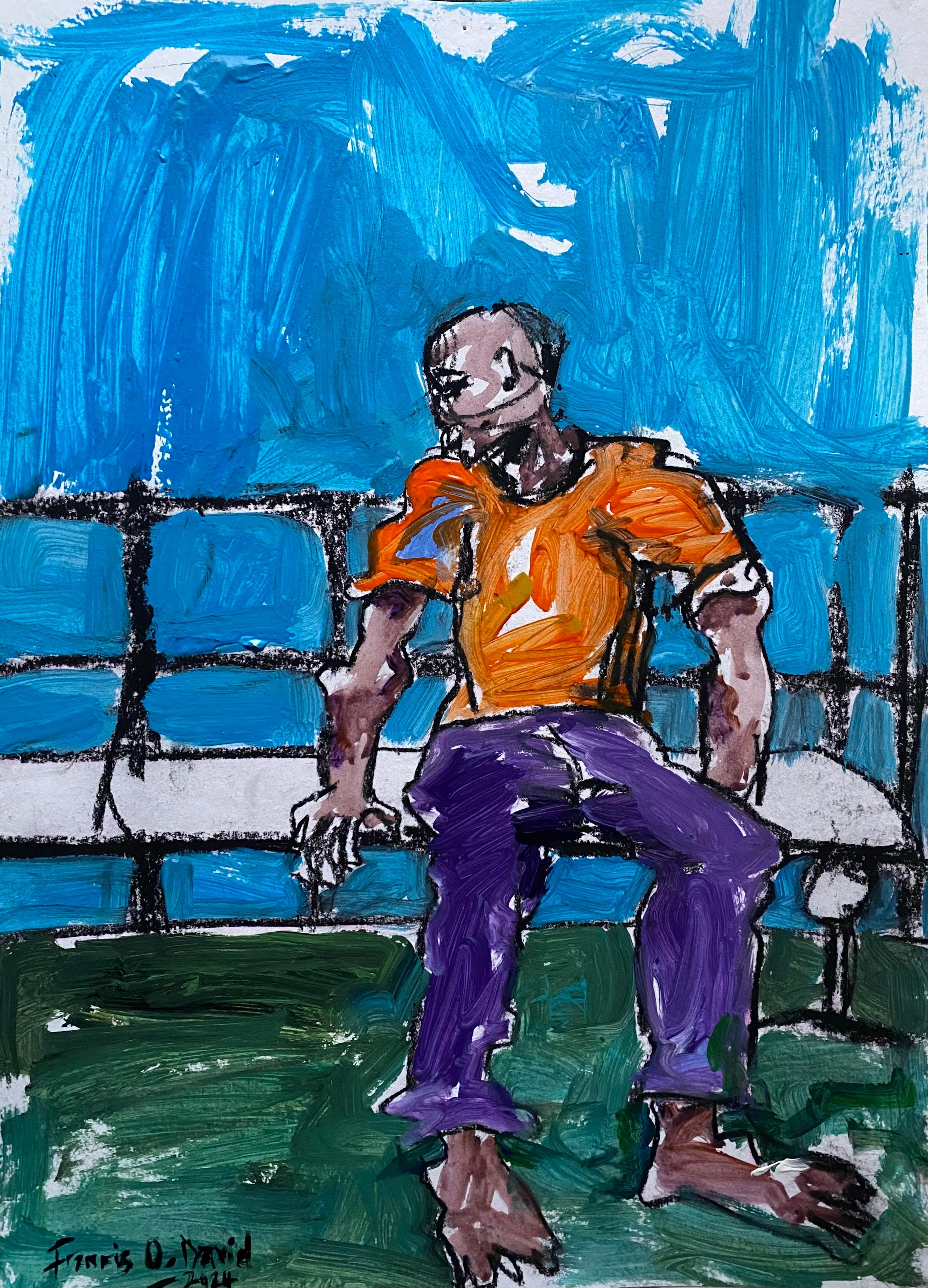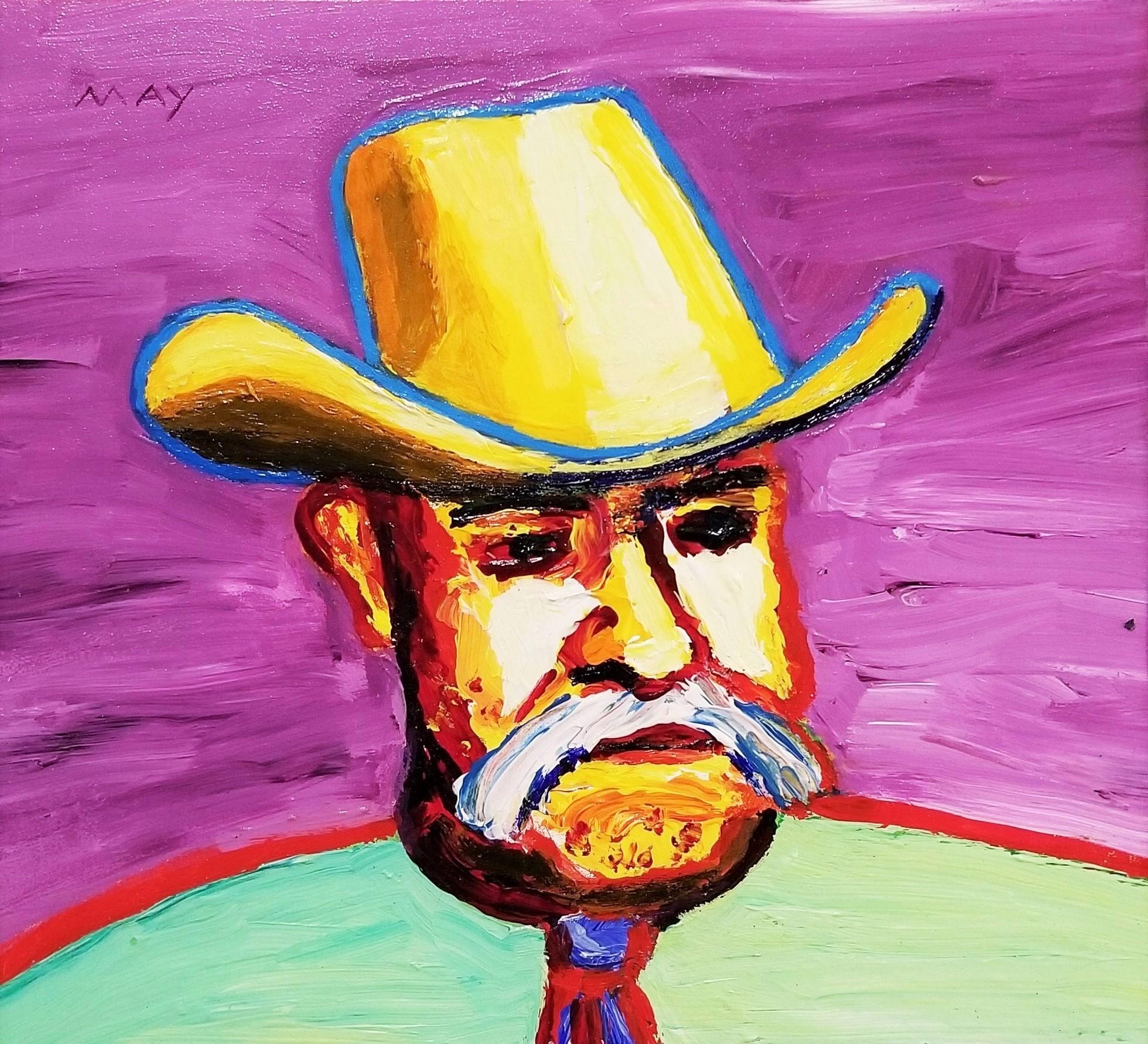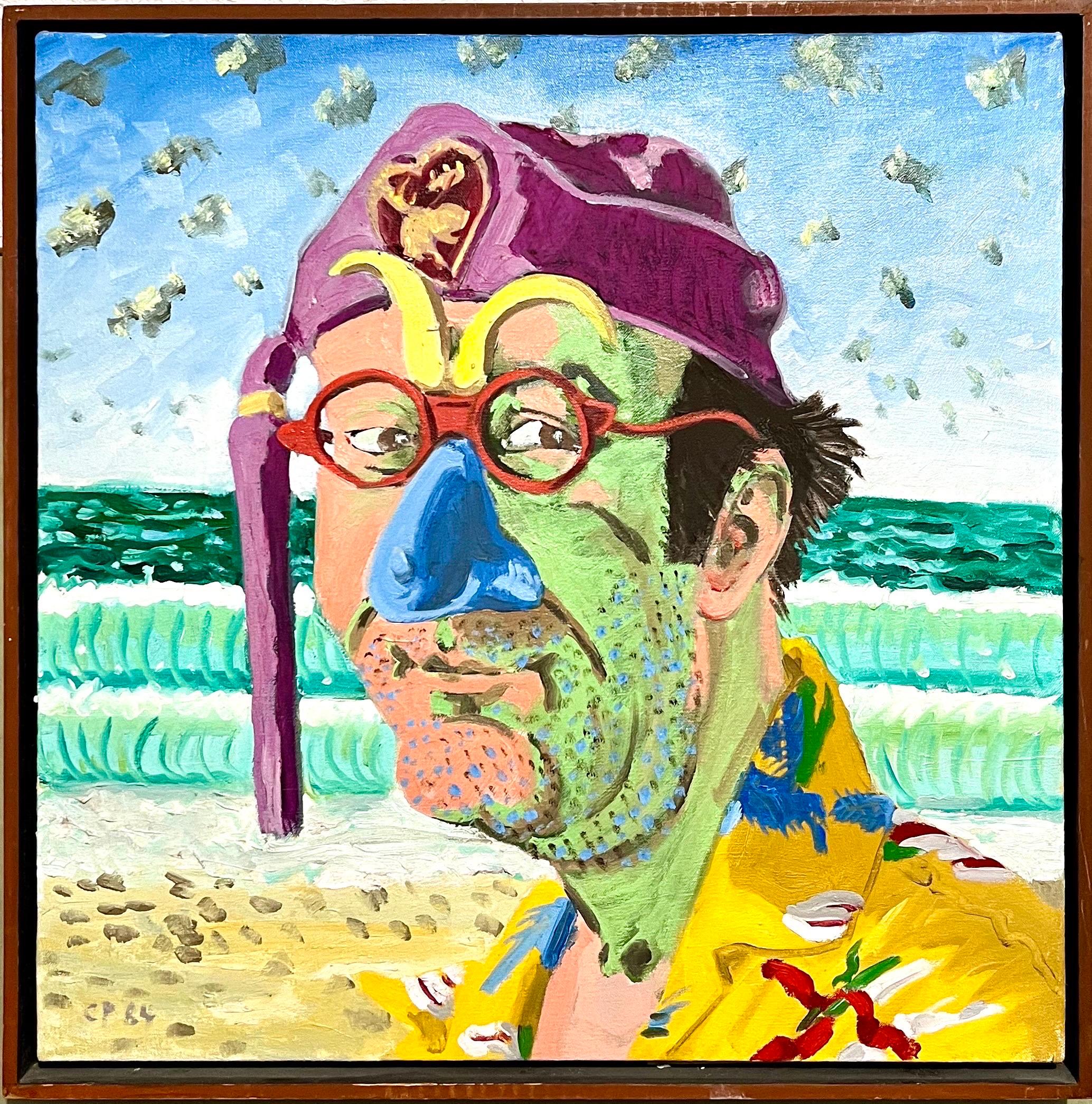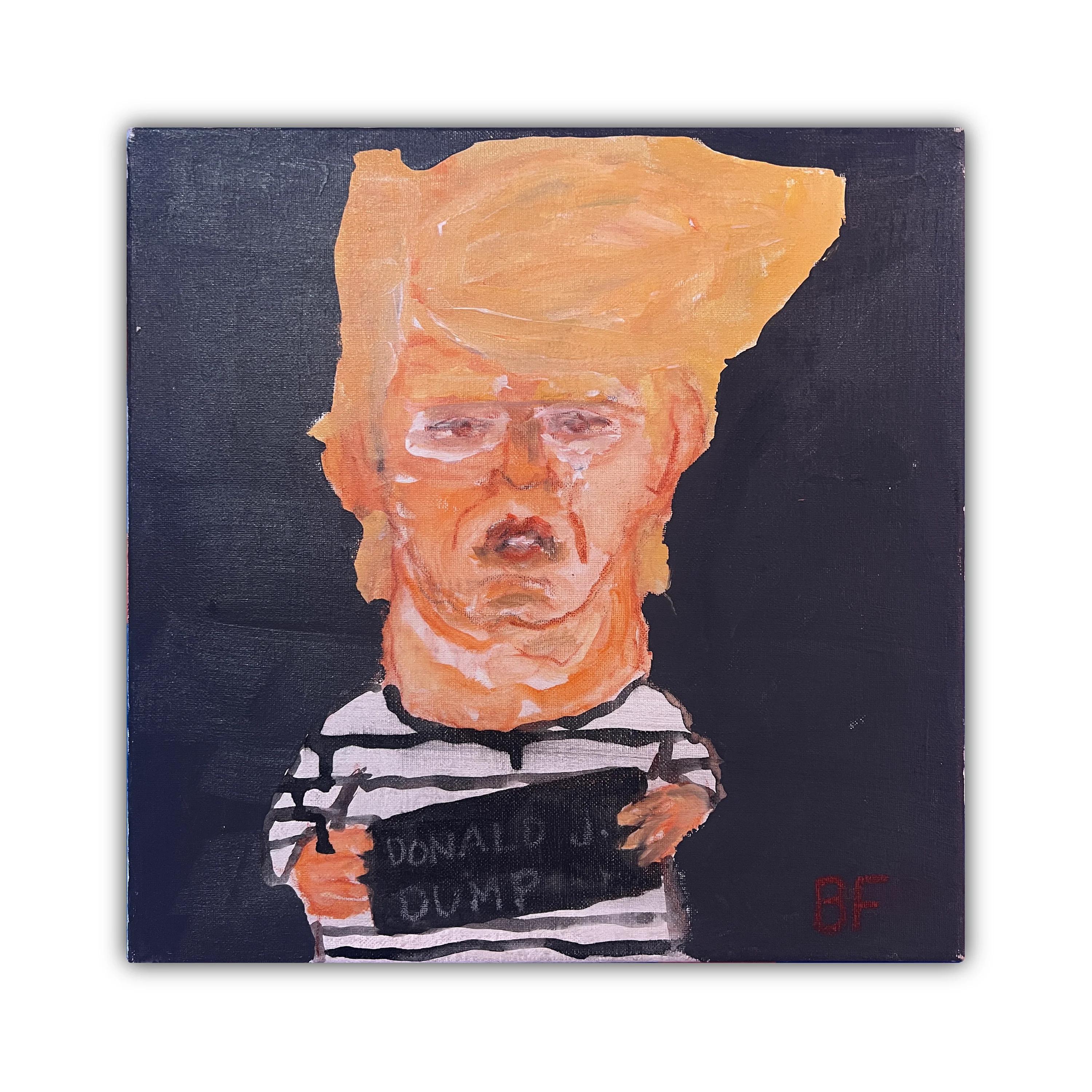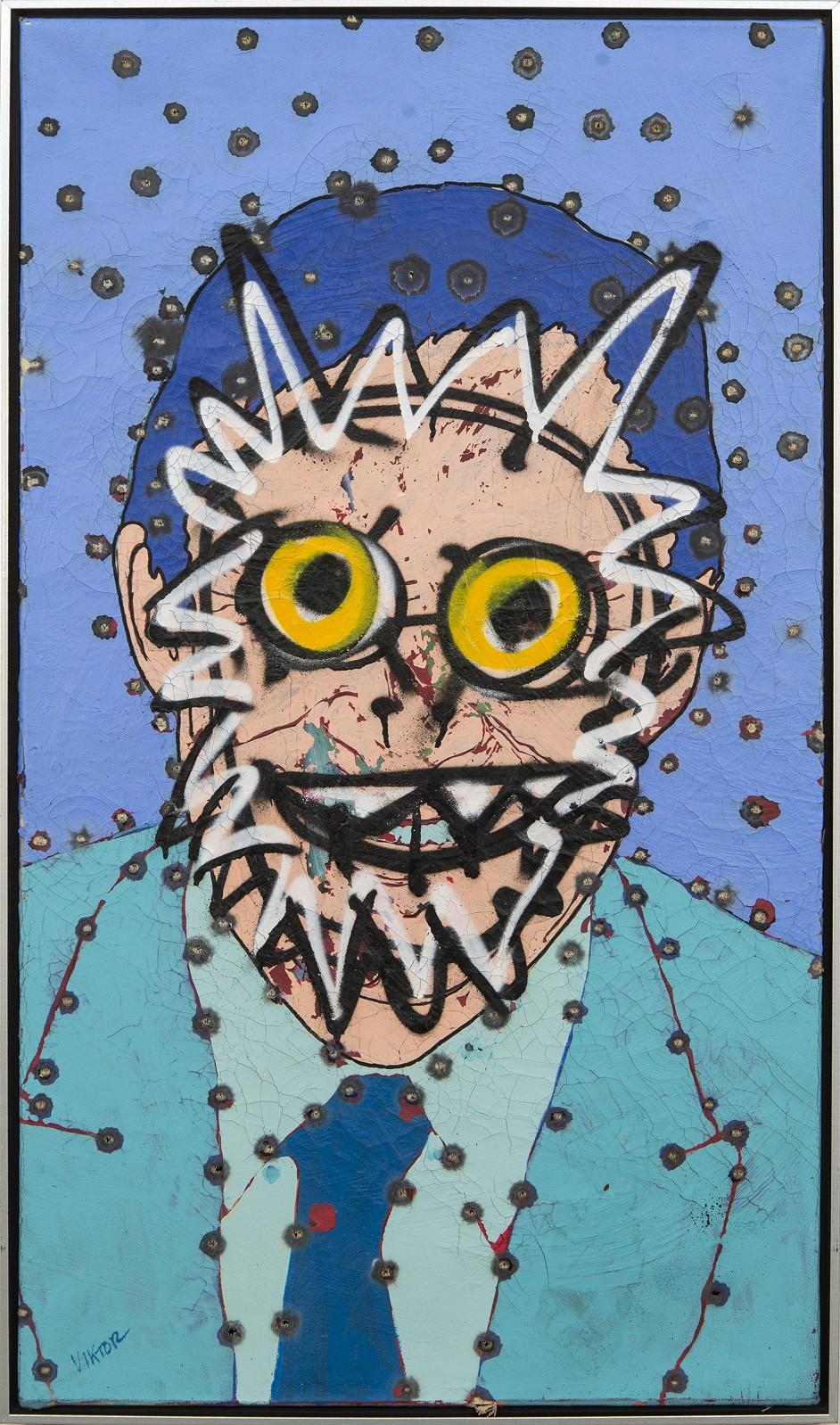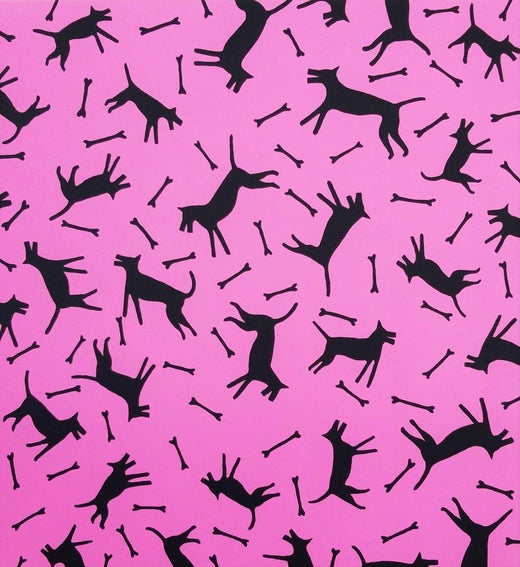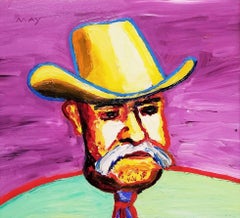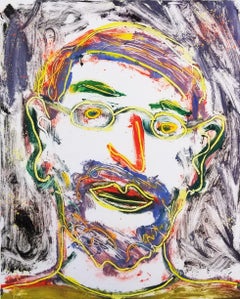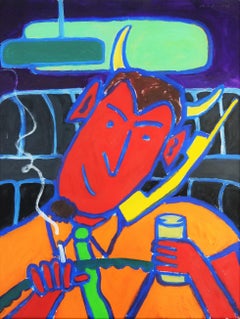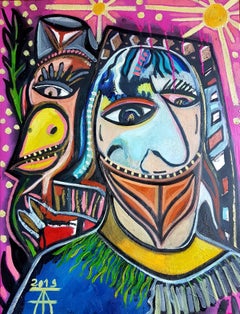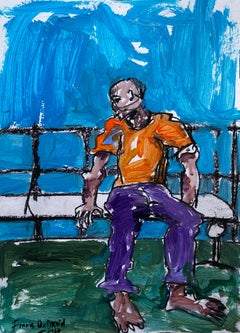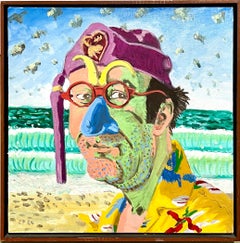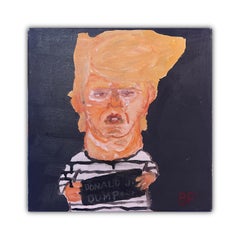Items Similar to Criminal #23 /// Contemporary Pop Art Painting Jail Prisoner Funny Bandit Figure
Want more images or videos?
Request additional images or videos from the seller
1 of 12
Dan MayCriminal #23 /// Contemporary Pop Art Painting Jail Prisoner Funny Bandit Figure2018
2018
$350
£265.85
€306.35
CA$492.89
A$546.44
CHF 287.17
MX$6,687.50
NOK 3,586.52
SEK 3,366.30
DKK 2,286.74
About the Item
Artist: Dan May (American, 1955-)
Title: "Criminal #23"
*Signed by May lower left. It is also signed on verso
Year: 2018
Medium: Original Acrylic Painting on Canvas Board
Board size: 8" x 10"
Condition: In excellent condition
Notes:
Dated by May lower right on verso with other various information pencil inscribed, (mostly sarcasm - typical humor of the artist).
Biography:
Dan May is an American painter and printmaker born on March 11, 1955 in San Francisco, CA. Raised in aesthetic surroundings heavily influenced by his architect father, May grew up learning to view all things with an eye for design, color, and shape. At age 5, he remembers his father cutting up a book of drawings by Henri Matisse and hanging them on the walls of their home. The French master Matisse as well as Richard Diebenkorn and David Hockney are his favorite art influences. He began his first attempts at painting at age 15, and later began to experiment with printmaking, teaching himself various techniques such as woodblock printing, etching, silkscreen printing, and monoprinting.
Monoprinting soon became May's medium of choice due to its wide range of expression and spontaneity that he felt other techniques lacked. May - "With monoprinting, you can only work a piece for as a long as the paint stays wet, so the resulting print has a feeling of movement and immediacy. I also like how monoprinting allows the brush strokes to transfer a transparent light quality to the print. For me, this is a technique that bridges drawing, painting, and emotions." The themes of May's prints borrow from his fantasies, memories, and the people and places he has seen in life's checkout lines and waiting rooms. "My work allows me to be a voyeur, to see through the walls into life's secrets, and unveil the hidden stories of everyday life," he says.
Color and design are essential elements in May's work. Exploring and playing with color is a huge source of enjoyment and passion for May. "Working with color combinations, playing color against color to create an electric contrast, never ceases to excite me," he says. May finds working color with design elements and balancing compositions is challenging, frustrating, and supremely rewarding.
Today, Dan May lives and works in Oakland, California. He has shown his paintings and prints in galleries predominantly throughout California and his work is in numerous private and corporate collections throughout the United States and the world.
Dan May
Dan May is an American painter and printmaker born on March 11, 1955 in San Francisco, CA. Raised in aesthetic surroundings heavily influenced by his architect father, May grew up learning to view all things with an eye for design, color, and shape. At age 5, he remembers his father cutting up a book of drawings by Henri Matisse and hanging them on the walls of their home. The French master Matisse as well as Richard Diebenkorn and David Hockney are his favorite art influences. He began his first attempts at painting at age 15, and later began to experiment with printmaking, teaching himself various techniques such as woodblock printing, etching, silkscreen printing, and monoprinting. Monoprinting soon became May's medium of choice due to its wide range of expression and spontaneity that he felt other techniques lacked. May - "With monoprinting, you can only work a piece for as a long as the paint stays wet, so the resulting print has a feeling of movement and immediacy. I also like how monoprinting allows the brush strokes to transfer a transparent light quality to the print. For me, this is a technique that bridges drawing, painting, and emotions." The themes of May's prints borrow from his fantasies, memories, and the people and places he has seen in life's checkout lines and waiting rooms. "My work allows me to be a voyeur, to see through the walls into life's secrets, and unveil the hidden stories of everyday life," he says. Color and design are essential elements in May's work. Exploring and playing with color is a huge source of enjoyment and passion for May. "Working with color combinations, playing color against color to create an electric contrast, never ceases to excite me," he says. May finds working color with design elements and balancing compositions is challenging, frustrating, and supremely rewarding. Today, Dan May lives and works in Oakland, California. He has shown his paintings and prints in galleries predominantly throughout California and his work is in numerous private and corporate collections throughout the United States and the world.
About the Seller
5.0
Platinum Seller
Premium sellers with a 4.7+ rating and 24-hour response times
Established in 1978
1stDibs seller since 2015
1,342 sales on 1stDibs
Typical response time: <1 hour
- ShippingRetrieving quote...Shipping from: Saint Augustine, FL
- Return Policy
Authenticity Guarantee
In the unlikely event there’s an issue with an item’s authenticity, contact us within 1 year for a full refund. DetailsMoney-Back Guarantee
If your item is not as described, is damaged in transit, or does not arrive, contact us within 7 days for a full refund. Details24-Hour Cancellation
You have a 24-hour grace period in which to reconsider your purchase, with no questions asked.Vetted Professional Sellers
Our world-class sellers must adhere to strict standards for service and quality, maintaining the integrity of our listings.Price-Match Guarantee
If you find that a seller listed the same item for a lower price elsewhere, we’ll match it.Trusted Global Delivery
Our best-in-class carrier network provides specialized shipping options worldwide, including custom delivery.More From This Seller
View AllCowboy /// Contemporary Pop Portrait Painting Funny Man Sheriff Dan May American
By Dan May
Located in Saint Augustine, FL
Artist: Dan May (American, 1955-)
Title: "Cowboy"
*Signed by May upper right
Circa: 2020
Medium: Original Acrylic Painting on Board
Framing: Framed in a contemporary black moulding
F...
Category
2010s Contemporary Portrait Paintings
Materials
Paint, Acrylic, Wood Panel, Board, Panel
Berkeley Pedestrian /// Contemporary Monoprint Face Portrait Figurative Glasses
By Dan May
Located in Saint Augustine, FL
Artist: Dan May (American, 1955-)
Title: "Berkeley Pedestrian"
*Signed by May in pencil lower left
Year: 2005
Medium: Original Monoprint on unbranded white cotton rag laid paper
Limi...
Category
Early 2000s Contemporary Portrait Prints
Materials
Paint, Monoprint, Oil
Devil Drive /// Contemporary Painting Canvas Funny Pop Street Art Car Driving
By Dan May
Located in Saint Augustine, FL
Artist: Dan May (American, 1955-)
Title: "Devil Drive"
*Signed and dated by May upper right
Year: 1998
Medium: Original Acrylic Painting on heavy wove paper
Sheet size: 28.13" x 21.6...
Category
1990s Contemporary Portrait Paintings
Materials
Paper, Acrylic, Paint
A Man and His Dreams /// Contemporary Pop Art Screenprint Nudes Figurative Funny
By Dan May
Located in Saint Augustine, FL
Artist: Dan May (American, 1955-)
Title: "A Man and His Dreams"
*Signed by May in pencil lower left
Year: 1991
Medium: Original Screenprint on unbranded white wove paper
Limited edit...
Category
1990s Contemporary Nude Prints
Materials
Screen
Female Face Icon XIV /// Contemporary Street Pop Art Portrait Girl Painting Art
By Jack Graves III
Located in Saint Augustine, FL
Artist: Jack Graves III (American, 1988-)
Title: "Female Face Icon XIV"
Series: Icon
*Signed by Graves lower right. It is also signed, dated, and titled on verso
Year: 2024
Medium: O...
Category
2010s Contemporary Portrait Paintings
Materials
Canvas, Paint, Acrylic
The Scream /// Contemporary Monoprint Portrait Face Figurative Art
By Dan May
Located in Saint Augustine, FL
Artist: Dan May (American, 1955-)
Title: "The Scream"
*Signed by May in pencil lower left
Year: 1992
Medium: Original Monoprint on unbranded white cotton ra...
Category
1990s Contemporary Portrait Prints
Materials
Paint, Monoprint, Oil
You May Also Like
The happy gagged man -Timothy Archer, 21st Century painting, Figurative art
By Timothy Archer
Located in Paris, FR
Oil paint, pastel and charcoal on paper
Signed and dated lower left by the artist
Category
2010s Contemporary Figurative Paintings
Materials
Paper, Charcoal, Oil Pastel, Oil
In My Dream - 21st Century, Contemporary, Expressionist, Modern, Mental Health
Located in Ibadan, Oyo
Shipping Procedure
Ships in a well-protected tube
This work is unique, not a print or other type of copy.
Accompanied by a Certificate of Authenticity (Issued by the Gallery)
About ...
Category
21st Century and Contemporary Expressionist Portrait Paintings
Materials
Paper, Charcoal, Acrylic
Figurative Expressionist Bold Pop Art Oil Painting Self Portrait Carlo Pittore
By Carlo Pittore
Located in Surfside, FL
Carlo Pittore
Oil on canvas, 1984,
Self Portrait, initialed and dated lower left,
slat framed, 21"sqr (frame) 20 X 20 canvas.
Provenance: The Private Collection of Wolf Kahn & Emily Mason
Carlo Pittore (1943 – 2005) born Charles J. Stanley was an American painter, educator, art activist, and publisher, whose primary study, teaching and body of work was figurative art and portrait painting. He was a pioneer in the Mail Art movement, he corresponded with such mail art luminaries as Buster Cleveland and Ray Johnson. Pittore is noted for opening the first independent art gallery in the East Village, Manhattan. In 1987, Pittore founded "The Academy of Carlo Pittore" in Bowdoinham, Maine.
Pittore (née Charles Stanley) was born to Stanford and Estelle Stanley in Queens, New York. He grew up on Long Island, in Port Washington, New York with his sister Marion and brother Elliott. Pittore graduated from Port Washington High School (1961), where he was active in the political and debating scenes. He then went on to graduate from the School of the Museum of Fine Arts at Tufts (1966), and post graduate from the Brooklyn Museum Art School (1978).
Pittore changed his name in the 1970s while studying abroad in Rome, Italy. The children nicknamed him "Carlo Pittore", (”Charles the Painter"). From there he went on to study at the Chelsea College of Arts in London.
In 1978, Pittore received the Max Beckmann Scholarship in Advanced Painting. It allowed him to begin studying with American feminist painter Joan Semmel at the Brooklyn Museum Art School. He also studied with visual portrait artist Alice Neel. After which, he taught art at the New York Cultural Foundation.
In the 1970s, Pittore and his close friend Bern Porter...
Category
1980s Neo-Expressionist Figurative Paintings
Materials
Canvas, Oil
"No Wigs in Prison" by Brad Fisher, Mixed Media Contemporary Painting on Canvas
By Brad Fisher
Located in New York, NY
No Wigs in Prison, by Brad Fisher
Mixed media on Canvas
14 X 14 in
Category
2010s Figurative Paintings
Materials
Mixed Media
Marc - graphic, portrait, pop-art style, cultural, acrylic painting on canvas
By Viktor Mitic
Located in Bloomfield, ON
Taking caricature portraiture to a new level, Viktor Mitic has portrayed 'Marc' in the guise of a zombified 1950s radio announcer. The bright blocks of co...
Category
2010s Contemporary Figurative Paintings
Materials
Gold Leaf
Conceptual Pop Art Color Oil Monotype Painting Abstract Figure Robin Winters
By Robin Winters
Located in Surfside, FL
Robin Winters (American, born 1950),
Untitled (Red Face) from "Cherry Block Series" 1986, monotype, pencil signed and dated lower right, plate: 6"h x 8.5"w, overall (with frame): 22...
Category
1980s Pop Art Figurative Paintings
Materials
Monoprint, Monotype
More Ways To Browse
The Prisoner
Henri Matisse Etching
Hockney Etching
David Hockney Etching
Portrait Of An Elegant Woman Painting
Portrait Painting Of Princess
Gentleman Oil Portrait
Portrait King Charles
19th Century Children Portraits
Society Lady Painting
Woman In A Hat Portraits
18th Century Italian Portrait
18th Century British Portrait
Portrait Painting Girl 19th
17th Century Dutch Portrait
Oil On Canvas Military Portraits
18th Century English Oil Paintings
Blue Venus
